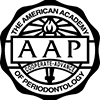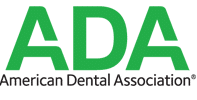Our Blog
Periodontal Disease and Cardiovascular Disease: Association or Causal?
Many epidemiological studies report the relationship between periodontal disease (PD) and cardiovascular disease (CVD). The majority of Americans age 30 and older are affected by PD. CVD is the number one cause of morbidity and mortality in the United States. PD is...
Chao Pinhole® Surgical Technique
May's Noplak News newsletter discussed the conditions and etiologies of gingival recession. There are multiple methods to treat gingival recession. Traditional gum recession treatments involve the use of donor tissue or soft tissue grafts from the patient’s palate in...
Dental Therapist Position Proposed
Legislation to create a dental therapist position in Ohio has been introduced in the Ohio Senate. The Ohio Dental Association strongly opposes Senate Bill 98, which is sponsored by Sen. Peggy Lehner (R-Kettering) and Sen. Cecil Thomas (D-Cincinnati). This radical...
Gingival Grafts– Indications, Benefits, and Treatment
Gingival grafts are performed to correct mucogingival conditions such as recession, minimal or lack of attached gingiva, and pocket depths beyond the mucogingival junction. The goal of gingival grafting is to restore the gingival form and function, along with root...
Occlusal Therapy Associated With Periodontal Disease
Our article from last month indicated that occlusal discrepancies are a significant risk factor for the progression of periodontal disease. Other studies also showed that the treatment of occlusal discrepancies can slow the progression of periodontal disease. These...
The Role of Occlusion in Periodontal Disease
The relationship of occlusal trauma causing the progression of periodontal disease has a controversial history. Initially it was believed that heavy occlusal contacts were responsible for periodontal disease. Another group stated that deeper pockets and bone loss...
Periodontal Disease Linked to 70% Higher Risk of Alzheimer’s Disease
A large longitudinal study has found a strong correlation between periodontal disease and risk of Alzheimer’s Disease. This study compared 9,291 patients with periodontitis and 18, 672 control patients without gum disease over 16 years. The results were published...
Update on Silver Diamine Fluoride
One of our previous blog articles (April, 2016) introduced silver diamine fluoride 38% (Advantage Arrest by Elevate Oral Care) as a product approved by the US Food and Drug Administration (FDA) in 2016 as treatment for dentinal hypersensitivity. The FDA has since...
Dentinal Hypersensitivity – Etiology
Dentinal hypersensitivity is one of the most common patient complaints in a dental office. Dentinal hypersensitivity is defined as “short, sharp pain arising from exposed dentin in response to stimuli, which are usually thermal, evaporative, tactile, and osmotic or...
Xerostomia and Caries
Xerostomia or dry mouth is a common side effect of many medications (over the counter, prescription, and dietary supplements) that lowers salivary flow, which affects oral health of patients, particularly increasing caries risk. “Studies show that 20%-30% of the...

 Dr. Sakamoto
Dr. Sakamoto
 Dr. Mannava
Dr. Mannava
 Our Team
Our Team
 FIRST VISIT
FIRST VISIT
 PATIENT FORMS
PATIENT FORMS
 DENTAL INSURANCE
DENTAL INSURANCE
 POST-OP INSTRUCTIONS
POST-OP INSTRUCTIONS





